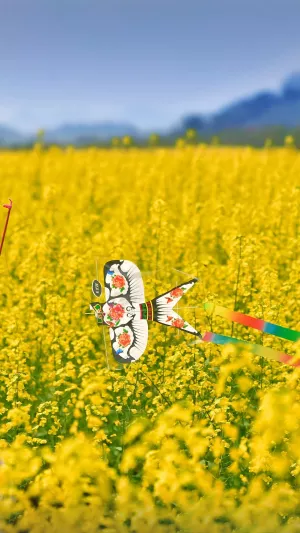Kites were invented by the working people of ancient China in The Spring and Autumn Period of Ancient China, 720 BCE to 480 BCE, more than 2,000 years ago. The emergence of kites was initially due to production needs.
Before the Tang Dynasty(618–907 CE), kites were used for defence. Later, as the wooden kites were too heavy, people used paper instead of wood to make kites.
Kites were introduced to the West when Marco Polo, an Italian, returned to Europe from China. However, it is believed that kites were introduced to Korea and Japan in the 10th century and to Europe in the 13th and 14th centuries.
As a kind of leisure and entertainment toy, kites have swept through China for thousands of years, which shows its vitality and influence. As a folk art of life, it reflects the characteristics of folk customs and society. After thousands of years of development and precipitation, kites have long been integrated with the life of the Chinese people and civilization.
The shape of kites is mainly to imitate nature's creatures, such as birds, insects, and geometric figures. The pattern is designed based on personal preferences, including butterflies, birds, and so on.
Kites contain culture, art, sports, science and technology, nationality, and other multiple concepts and embody the folk lifestyle, ideological belief, and aesthetic taste. Its emergence, development, and evolution are closely related to the characteristics of the local natural environment, the productivity level of The Times, and the economic and cultural policies of a specific period.
With the standardization and popularization of sports, kites were included in the official sports events in 1986. As a traditional and national sport in China, flying kites has been transformed from a recreational competition among ordinary people in the wilderness to an official national sports competition, which shows that this ancient sport culture can still shine brightly in today's social life.
Under the comprehensive effect of entertainment, competition, artistry, and popularity, kites are increasingly integrated into public daily life. The traditional ancient kite sport has been re-recognized and accepted by people and gradually adapted to the characteristics and styles of modern life.
<b>Here are some tips for flying a kite:</b>
1. Follow the height limitation. If the kite flies too high, it's difficult to control it and may break the line.
2. Fly your kite on a sunny day to avoid lightning strikes during thunderstorms.
3. Children flying kites should choose small, lightweight kites to prevent strong winds from dragging them. This ensures safety and allows them to have better control over the kite.
4. When flying kites, it is important to choose wide, open areas away from traffic. Pay attention to the ground conditions and observe the surrounding buildings within the kite’s flight range.
Since people often walk backward while flying kites, it is crucial to be cautious and mindful of the terrain to avoid tripping or falling injuries.





